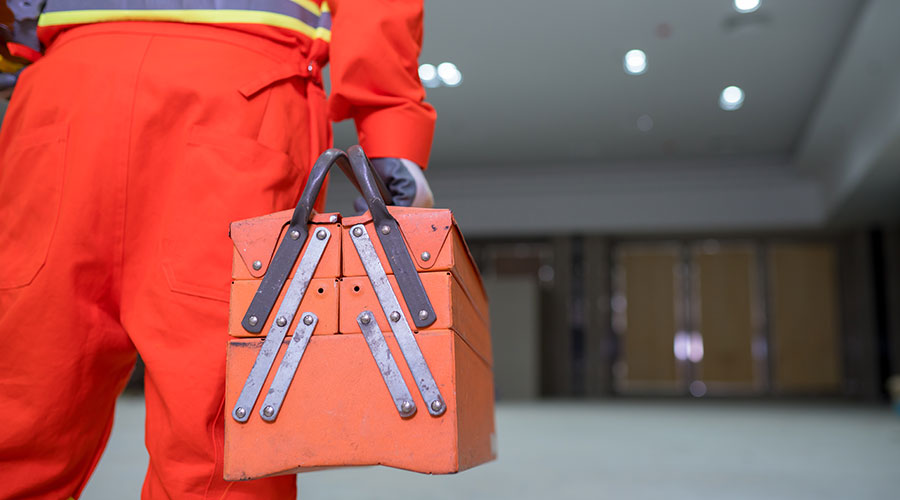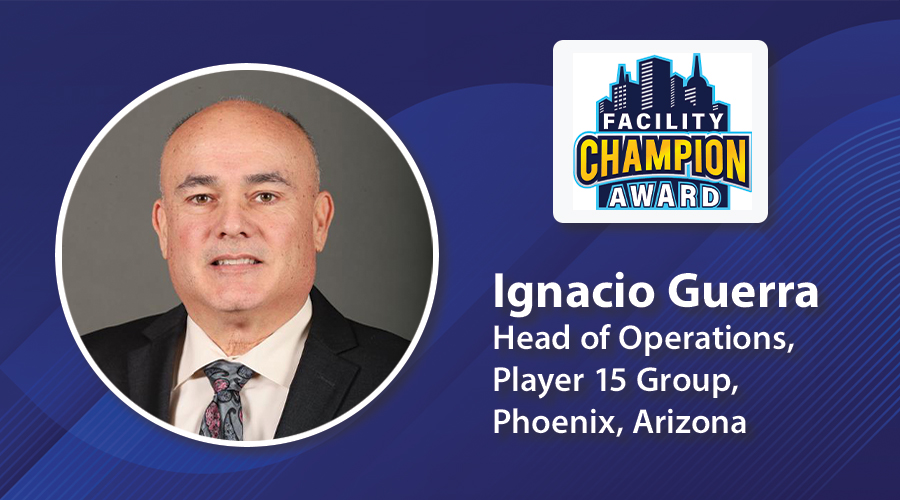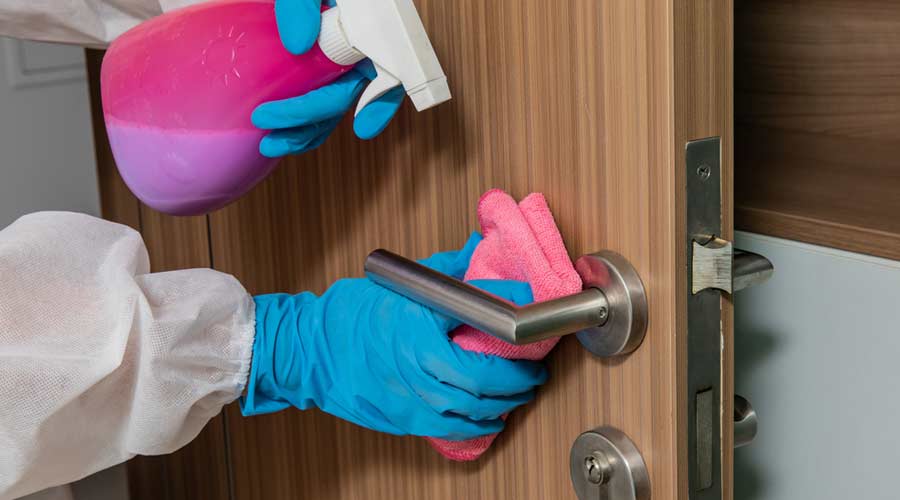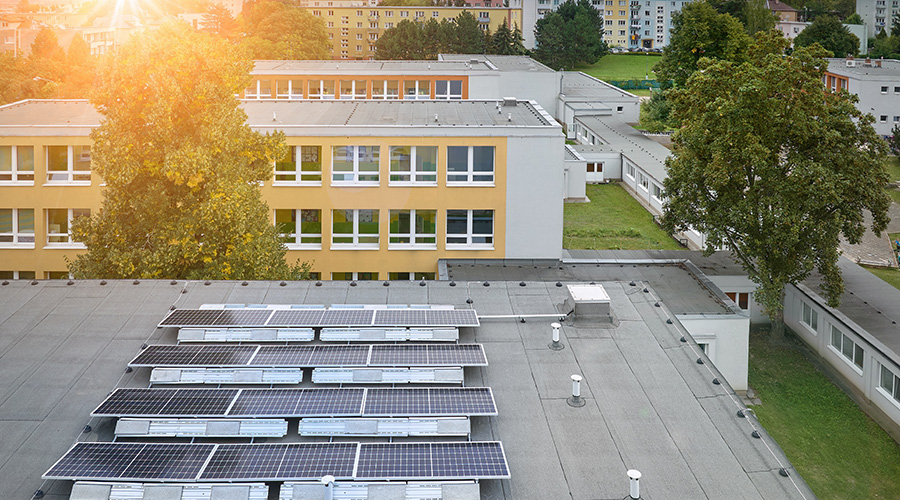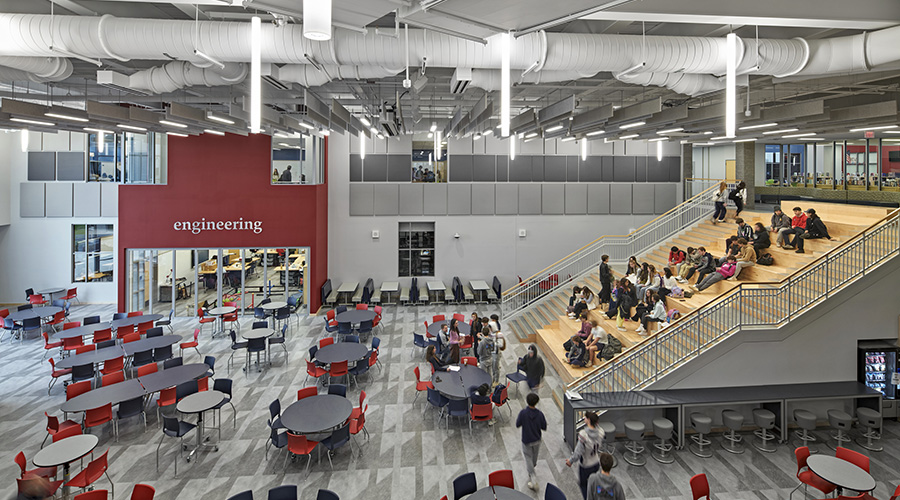Education Facilities Managers Adapt to Keep Schools Safe Post-Pandemic
Facility managers will need to do their homework and be in tune with the latest and greatest options to keep school facilities safe and clean.
By Maura Keller, contributing writer
OTHER PARTS OF THIS ARTICLEPt. 1: This Page
The pandemic has been a household phrase for nearly three years. And as facilities of all types continue to grapple with the challenges surfacing due to the pandemic, one area of continued concern is proper sanitation protocols.
While managers have certainly focused on establishing clean, welcoming environments, the pandemic has pushed FMs to quickly shift and adapt to different cleaning and sanitation practices. In addition to purchasing new, more effective cleaning chemicals, they have had to invest in personal protective equipment, install Plexiglass partitions and floor signs directing building occupants to maintain proper distancing. And while these efforts have catapulted facilities into a whole new level of sanitation procedures, it appears that many of these procedures are here to stay long after the pandemic becomes a distant memory.
A lot of manufacturers offer cleaning, sanitizing and disinfecting solutions that can help combat the spread of COVID-19 while providing a safe and hygienic environment for facilities. In fact, facility management professionals agree that the recent pandemic has undoubtedly permanently altered managers’ approach to infection control.
“In our university system, the new campus standard has become MERV 13 filters. This level of filtration does also increase indoor air quality during California wildfire season as well, which is an added benefit to the permanent change,” Todd says. “We’ve learned to be prepared and have a plan to change processes or equipment at any time. Past practice is no longer adequate.”
He adds that the pandemic also drew added attention to some of the aging air handlers and HVAC equipment on campus, which has resulted in funding for replacements that may not have occurred otherwise.
Watkins agrees that the focus on a long-term basis will certainly be on ventilation, with surface cleaning and disinfection a close second.
“These changes, though more manageable now, will be with us forever and will guide much of our decision making in the future,” Watkins says.
Looking back, facility managers recognize the novel coronavirus was truly an unprecedented experience for all.
“There was no playbook for COVID-19 and we all had to make the best decisions for our districts,” Watkins says. “Those of us connected and involved in professional facilities related associations such as New York State School Facilities Association (NYSSFA) and National School Plant Management Association (NSPMA), which I'm a past president of both, were in much better shape due to the ability to network. This resource was invaluable, and continues to be.”
The pandemic undoubtedly has had long-term impacts on infection control issues within building environs, but what do industry professionals see the future holds for facility managers and their infection control strategies?
“I think in many ways equipment and processes that did not garner much attention historically are now front and center,” Todd says. “I think the future has more of a focus on improving and upgrading aging equipment preventatively.”
Indeed, consistency is what will also help facility managers win the marathon they are facing in this post-pandemic world. FMs learned throughout this pandemic that the public expects cleanliness and demonstrated hygiene standards. But maintaining the highest safety and hygiene standards is more than a check-the-box exercise, it requires consistent care and enforcement of new standards and protocols.
Watkins adds that facility managers also will need to do their homework and be in tune with the latest and greatest options to keep school facilities safe and clean.
“There are many systems approaches that have been successful, like our own Air & Surface program, and managers will need to make fact-based and financially appropriate decisions for their district,” Watkins says. “To be positioned the best we can, and to respond as the pandemic continues to evolve, we will need to layer our prevention measures so we can respond and react in a timely and positive way. Stay the course and be consistent with communication and training.”
Maura Keller is a freelance writer in Plymouth, Minnesota.
Related Topics:






